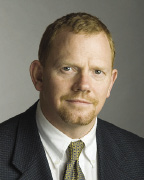In March, I wrote about the proposed transformation of Connecticut's site cleanup programs that are currently implemented by the Connecticut Department of Energy and Environmental Protection (CTDEEP). The transformation has been envisioned and initiated by commissioner Esty and Governor Malloy in an effort to speed up remediation of contaminated properties and to facilitate and promote economic development of Brownfields. The legislative changes proposed for the 2012 Legislative Session were delayed until the 2013 Legislative Session via House Bill 5343, now Public Act 12-196. The purpose of the delay is to provide additional time to refine the details of the proposed program. In parallel with the development and implementation of a new cleanup program, the CTDEEP has released proposed changes to the Connecticut Remediation Standard Regulations (The RSRs). Most environmental professionals (legal and technical) have previously expressed concern that a new cleanup program cannot be successful without revisions to the technical and numerical criteria in the RSRs.
Initial reaction to the proposed revisions have been mixed, with many professionals expressing concern that CTDEEP has proposed revisions that are more stringent and that will greatly increase the number of properties requiring expensive remedial action of both soil and ground water. In particular, CTDEEP has proposed new criteria for petroleum hydrocarbons present in ground water in GB classification areas, which are areas where ground water may already be degraded from industrial/commercial activities and where ground water is not used for drinking. In addition, they are proposing surface water protection criteria and volatilization criteria for these compounds. Under the current regulations, there are no such standards and it is sufficient to remove the source of such contamination and allow ground water and/or surface water impacts to naturally attenuate. While the revisions to the RSRs may be independent of the effort to implement a new cleanup program, at the very least the revisions to the RSRs are emotionally linked to this effort and there is growing consensus that an attempt to make the RSRs stricter will undermine the entire transformation process.
Careful review, however, does identify several proposed revisions to the RSRs that are positive and that will facilitate the site remediation. In particular, CTDEEP recognizes the issues associated with property containing urban fill, which is a common occurrence across the state of Connecticut, and they have included revisions that will allow more flexibility to leave urban fill in-place as long as there is no significant risk of exposure to human health or the environment.
CTDEEP will be holding two information sessions regarding the proposed changes to the RSRs on September 20th and September 26th at CTDEEP headquarters at 79 Elm St. in Hartford. In addition, a public hearing will be held on October 25th from 1 to 6 p.m. The real estate community is advised to discuss the proposed changes with an environmental professional and to participate in the public hearing process. Input and participation from the real estate community is paramount to successful implementation of the new cleanup program in a manner that meets the goal of protecting public health and the environment, but that also embraces lessons learned from years of both successful and unsuccessful site cleanups and does not place additional, unnecessary, unscientific regulatory burdens on the transfer and development of real property.
CTDEEP Underground Storage Tank Reimbursement Programs gets new life, but not a long one
After a long protracted debate during the Legislative Session, Public Act 12-189 includes a provision for the allocation of $36 million over a four year period ($9 million per year) for reimbursement of claims submitted to the UST Reimbursement Program. While the proposed funding represents a significant increase from funding levels over the last few years, the funding is not sufficient to meet the current backlog of claims and the program will be phased out. After 2013, UST owners and operators subject to financial responsibility requirements will need to meet these requirements through other mechanisms.
CTDEEP will be reviewing existing, backlogged claims and prioritizing how the money gets allocated to the applicants. Five categories of applicants have been created: small station, mid-size station, large station, municipal, and other. Priority will be given to municipal and small station applicants. In addition, various deadlines for new applications have been established. No new applications will be accepted after October 1, 2014 for small station, municipal, and other applicants; after October 1, 2013 for mid-size station applicants; and after October 1, for large station applicants. Additional information regarding changes to the UST reimbursement program is available on the CTDEEP website.
Samuel Haydock, PG, LEP, is director, northeast environmental operations for BL Companies, Meriden, Conn.
Tags:
Connecticut environmental update: The transformation of the transformation process
September 20, 2012 - Connecticut









